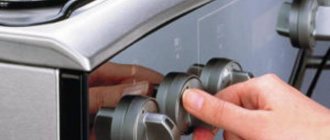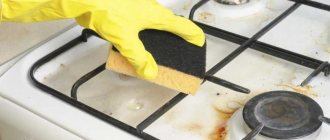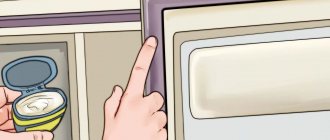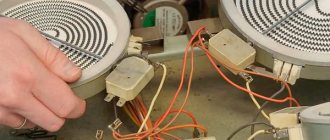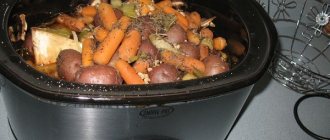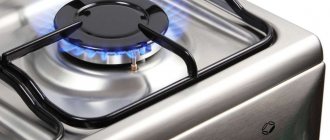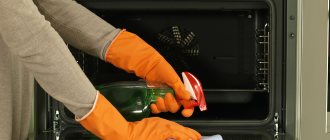Food is prepared on the kitchen stove every day. Most often, housewives touch handles and switches. We touch it in a hurry with a dirty hand, then when we fry, splashes of fat fly in different directions, dirtying our hands, or the milk runs away.
As a result, dirt and grease become clogged in small cracks, dents and crevices. Attempts to wash these stains with a sponge and detergent end in vain. And how do you clean it all up?
In this article, you will learn about cleaning methods in different ways, depending on the type of pens, the degree of contamination and affordability. You will learn which household chemicals are suitable for you, as well as some effective recipes that you can prepare at home yourself.
Methods for cleaning pens depending on the type
If the regulators are easily removed, they can be soaked or boiled in a solution to remove grease, and then easily clean off the residue with a brush.
If the handles on your stove are not removable, do not be upset, and for this case there will be a way; in this situation, sticks with cotton wool, again a toothbrush, which is no longer suitable for brushing teeth, gauze swabs and toothpicks are quite suitable for helping us.
Cleaning of fixed handles is carried out in the following sequence:
- take a product that contains chlorine;
- moisten a gauze swab in it and apply it to the hands (or spray it with a spray bottle);
- wait a few minutes;
- Next, we take a brush and clean it, in hard-to-reach places we go through with a cotton swab and a toothpick;
- Afterwards, use a sponge or cloth to wipe away any remaining dirt.
What do we need?
The process of cleaning a flat horizontal or vertical surface, as a rule, does not cause difficulties, but removing dirt from the handles of the stove, which have a complex shape and relief, is quite difficult.
Therefore, in order to remove grease deposits from the most difficult to reach places and completely clean the regulators, prepare the following before starting work:
- cleaning agent;
- cotton swabs, cotton pads, gauze cloth;
- toothpicks;
- an old toothbrush;
- sponge and soft, clean cloth.
Types of pollution
Housewives in the kitchen most often have to deal with two types of dirty handles:
Light soiling of handles
If you pay attention to cleaning the handles and the entire stove after each cooking, keep your hands clean, and wipe off grease and burnt food in a timely manner, then the stains will be light and washing them will not be difficult.
ingrained fat
It happens that for various reasons, it is not possible to wash the handles and stove immediately after cooking, then the fat eats into the surface, and here other methods are needed.
Cleaning technology for removable and non-removable handles
Removable
The easiest way to deal with dirt is on the removable handles and the front panel of the stove. Before use, you need to turn off the gas or disconnect the stove from the mains if it is an electric model. After this, pull the handles towards you, or unscrew them if they are threaded. You can leave them to soak and then scrub them with a sponge, or immediately start washing them under the tap.
While the stove handles are soaking, you can thoroughly wash the front panel of the stove, where a lot of grease also accumulates. For convenience, you can use cotton swabs and brushes to get into hard-to-reach places and crevices. To wash removed handles, you can soak them in a soda solution, in citric acid, or simply treat them with boiling water. You should not scrub off old grease using scrapers and steel wool.
Almost everyone knows how to clean grease off stove handles at home using strong household chemicals. But it is not always possible to use such tools, and sometimes they are simply not at hand when they are needed. In such situations, you can easily use improvised means that are guaranteed to be found in every home.
Lemon acid
Lemon acid effectively removes stains on plastic handles. You need to prepare a solution - 2 teaspoons of powder per 1 liter of water. Soak the removed handles in it for half an hour, and then wipe off the softened dirt with a sponge. The main advantage of citric acid is that it not only dissolves fat, but also additionally whitens plastic parts that have faded from intensive use and high temperature.
Important! It is necessary to work with citric acid with gloves, otherwise you can get irritation or even a chemical burn to the skin.
We suggest you familiarize yourself with How to clean the filter in a washing machine: where it is located and how to remove it
Mustard powder
One of the oldest ways to combat grease on any surface is to use mustard powder. It has the ability to quickly and effectively deal with greasy marks, even if they have already dried thoroughly. You can use mustard powder to clean the stove according to the following instructions:
- pour a small amount of boiling water over mustard powder so that you get a thick, mushy mixture;
- rub the slurry over the surface of the stove handles, if they are non-removable, and leave it there for 3-5 minutes;
- rinse with warm water;
- if the handles are easily removed, you can simply soak them in hot water with mustard added, wait until they cool down and rinse well under the tap.
Mustard dissolved in hot water produces acrid fumes that can lead to eye inflammation, sneezing and allergic rhinitis. Therefore, it is advisable to work in a respirator, or it is better to open a window so that everything can be quickly ventilated.
You should also wear gloves when working with home remedies.
If you don’t have anything to clean the handles of a gas or electric stove from grease at home, you can use soda. Regular baking soda or technical soda, or calcined soda, as it is more often called, will do. The method of use is simple:
- In a separate container, prepare a slurry of soda, brewing it with boiling water;
- Using a sponge or brush, apply the resulting slurry to the surfaces to be cleaned, paying special attention to hard-to-reach, heavily soiled areas;
- leave the composition for no more than 5 minutes on the surface to be treated;
- rinse with a sponge and warm water;
- If the front panel of the stove is dark in color, to avoid streaks, you can wipe it with vinegar after washing off the soda.
Note! It is worth using a mixture of soda brewed with boiling water. If you just use dry powder, it will scratch the surface and make it look dull.
Laundry soap
This is a remedy that has been used for many different purposes for many generations. You can also use it to regularly wash grease-covered stove handles. For these purposes, a standard bar of brown laundry soap or a liquid version, which can be purchased today at any household chemicals store, is suitable.
- grate bar soap on a coarse grater;
- dissolve the resulting shavings and bring them to a pulp;
- rub into the surface using a regular dish sponge;
- rinse with warm water after 10 minutes.
Due to the high concentration of alkali, laundry soap quickly dissolves grease. It is absolutely non-toxic and does not cause allergic reactions. But there is one drawback - it has an unpleasant smell, which not everyone likes. It will not work to replace ordinary laundry soap with a scented modern version; it contains 2 times less alkali. Therefore, it is better to simply rinse the surface thoroughly after use and ventilate the kitchen.
What products should I use to quickly clean stove handles?
For quick cleaning of handles, special wipes are suitable. They contain alcohol and citric acid, which successfully remove fat.
This also includes a spray product that you can buy in a store or prepare at home.
You can also use window cleaner by spraying the handles and then wiping them with a dry cloth. When using this method, the solution gets into hard-to-reach places, dissolving fat.
Wet wipes and baking soda are good helpers for cleaning plastic.
The stove can be cleaned from minor contamination using ordinary wet wipes.
Pour a couple of teaspoons of soda into the middle of the napkin and wrap it in a small envelope. Once the powder has absorbed moisture, it is ready for use. The resulting napkins with soda are used to actively wipe the handles.
When the surface of the plastic is clean, you can wipe them again with wet wipes or simply rinse them with running water.
This method is a convenient alternative to the usual baking soda paste.
Folk remedies
There are many grandmother's remedies that can be prepared at home from the most ordinary materials. They can always be found in almost every home.
Lemon juice
After processing this method, a pleasant lemon aroma will remain in the kitchen. We work with the use of this representative of citrus crops in the following sequence:
- We take one lemon, squeeze the juice out of it, then take a toothbrush (which we will no longer use to clean our teeth) and, dipping as necessary, clean our hands in a circular motion.
- If after this the dirt remains, additionally take baking soda and alternately dip it in juice and then in soda and clean off the remains.
- Afterwards, wash with a damp cloth or sponge and rub with a dry towel.
Important!
It is advisable to apply the solution in this way quickly while the quenching process is taking place.
Vinegar will get rid of odors and remove dangerous bacteria.
If the handles are removable, add a solution of equal proportions of water and vinegar in a saucepan, carefully remove the handles from the stove, lower them into the diluted liquid and put them on medium heat, bring to a boil and boil for 6-8 minutes. Then remove, cool and rub with a towel until dry. We install it in place.
If the handles are not removable, then in a spray bottle you need to dilute the composition of one part vinegar plus one part water, spray the handles generously, wait a while, and then wipe them with a clean, dry towel or paper napkin.
Laundry soap
For removable regulators, the following method is suitable:
- take a basin or large saucepan (the main thing is that everything fits there);
- rub laundry soap on a coarse grater into our container, fill it with hot water (about 80 degrees);
- stir until the soap dissolves (dishwashing detergent, washing powder);
- carefully lower our hands into the resulting solution and hold for 20-30 minutes (depending on the degree of contamination);
- then, after the time has passed, we find an unnecessary toothbrush and carefully clean the regulators on all sides and rinse with water.
After such cleaning, the removable regulators will again sparkle like new.
Advice!
If the contamination is very heavy, the soaking process should be increased to 10 hours.
This solution can also be used for handles that are not removable. To do this, use the non-soft side of the sponge, after applying the solution to it, and thoroughly rub the stained areas. And then remove the residue with a rag or paper towel.
Ammonia
This drug will help remove very strong and old stains if you work in the following sequence:
- dilute one part of water with one part of ammonia;
- dip a gauze swab and apply the product to the surface; We treat hard-to-reach places with a cotton swab and toothpick;
- wait a few seconds and wash off any remaining dirt with a clean, damp cloth.
Advice!
You can also use ammonia to clean furniture, dishes, taps in the kitchen and bathroom, and even items made of precious metals. It is advisable to carry out cleaning with this product while wearing a mask so as not to be poisoned by its vapors.
Means for cleaning handles from grease
To clean the kitchen, you can choose industrial household chemicals: from environmentally friendly to “thermonuclear”, or use home remedies, which are always at hand.
Baking or soda ash powder
You can wash the stove handles with water and soda - baking soda or soda ash. To do this you need:
- dip a wet sponge into any of the powders and clean the surfaces;
- if necessary, use an old toothbrush;
- rinse with a clean damp cloth, completely removing the soda;
- wipe the surface dry.
Lemon juice for light stains
This is a very simple method, but it is only suitable for minor greasy conditions. It should be used like this:
- squeeze juice from lemon;
- moisten the swab with it and generously lubricate the handles of the stove;
- After an hour, clean with a sponge or brush and wipe clean with a damp cloth.
Cleaning is doubly pleasant this way, because after cleansing a natural citrus aroma remains, which cannot be said about the next method.
Ammonia solution (checked by the editors)
Ammonia is often used as a household cleaner: it has a very pungent odor, but is unusually effective. It must be used extremely carefully, otherwise you may get poisoned:
- dilute ammonia with water in half, not forgetting to protect the respiratory system and skin of the hands;
- moisten the cloth with the solution and wipe away the dirt;
- Wash with a clean damp cloth.
An alternative is ammonia-anise drops. They do not have a pungent odor, do not require dilution with water, and at the same time are not inferior in effectiveness to ammonium hydroxide.
The result after cleaning with an aqueous solution of ammonia. The method is 100% working
Vinegar essence solution for severe stains
This method of dealing with dirt on the handles can only be done on gas stoves, and only on those where the handles are removable. It is used only as a last resort: if the dirt is very old and cannot be wiped off otherwise:
- prepare a solution at the rate of 2 tablespoons of product per liter of water;
- put the handles in it and let it boil;
- 5-7 minutes after the start of boiling, turn off the stove, drain the water and let the parts cool at room temperature. Do not cool them under cold water under any circumstances, this will lead to cracks;
- then rub a little heavy dirt, which will now come off well, and rinse with clean water.
Do not forget that all work on cleaning regulators must be carried out with gloves.
We recommend reading: How to quickly clean an oven or microwave.
Household chemicals
For those who are used to buying cleaning products and detergents in household chemical stores, there is a huge variety and choice.
Household chemicals consist of various alkalis and solvents with the addition of soap and other ingredients. When using these tools, you should also not forget about the safety measures, which include the following:
- work with gloves;
- strictly follow the instructions;
- ventilate the room after treatment.
It is worth thinking before buying products in a store, as they are more expensive and not as effective as homemade products.
How to clean removable handles
The simplest cleaning method does not require aggressive household chemicals. To do this, place the handles in a container with water at a temperature of 80⁰C, add detergent or grated laundry soap and leave for 15-20 minutes. After this, they are cleaned with an old toothbrush.
Don't keep your hands in the water for too long. While it is hot, the dirt easily comes off the surface of the handles, but when the water cools, the dirt is absorbed again.
After washing the handles, wipe the surface of the stove in the places where they are placed.
How to keep your pens always clean
To ensure that the control knobs are always clean and last longer, also to prevent the accumulation of germs, regularly, after each preparation of food, wipe them with special napkins or a damp cloth, dipping it in a detergent or cleaner, and keep your hands clean.
Choose the product that suits you best, follow our recommendations and do not forget about precautions. And let cooking bring you only joy and pleasure.
How to wash away old grease and dirt
Cleaning the removable handles of a gas stove
It is not always possible to remove stains on the stove handles with a regular degreaser, especially if they have completely dried out. Another difficulty is that when using an oven or simply when the front burners are used frequently, dirt sticks tightly to the plastic or hard rubber parts. Since it is not possible to clean the handles of the stove from old grease the first time with the usual means, you can adopt the following tricks:
- you can use a melamine sponge, which does not contain toxic substances, but still copes with any type of contamination;
- Pure medical alcohol is also effective - it dissolves grease and dirt;
- instead of alcohol, you can take purified gasoline and wipe the handles with it using a hard, clean cloth;
- if the handles are removable, you can simply soak them in boiling water or put them in a bowl of liquid in the oven.
The latter method can only be used if the removed handles do not contain metal parts. Otherwise, both the handles and the microwave oven will be damaged.
